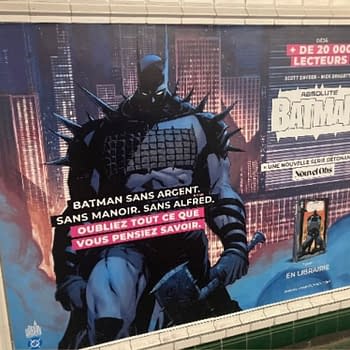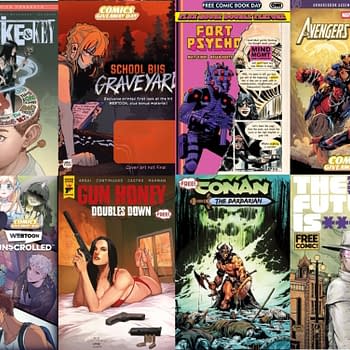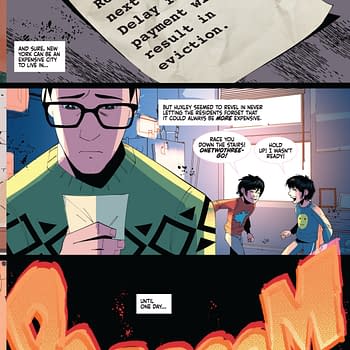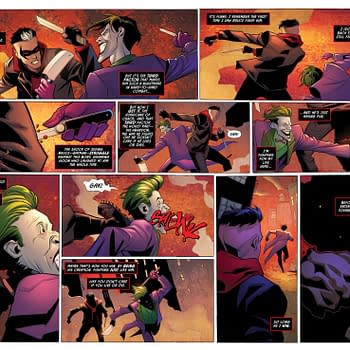Posted in: Comics | Tagged: Comics, entertainment
Gendercrunching October 2016 – DC Comics Up, Marvel Comics Down
By Tim Hanley
October saw noticeable gains for DC Comics' overall percentage of female creators as they posted the higher total over a declining Marvel. We also begin our semi-annual check in with the rest of the direct market with visits to Image, IDW, and Dark Horse.
DC COMICS
It was a strong month for female creators at DC with a relatively high overall jump and solid representation across the board. In October 2016, DC released 79 new comic books with 782 credited creators, 628 men and 154 women. Let's look at their numbers:
DC's overall percentage of female creators rose 2.7%, a sizeable jump that takes the publisher to their highest total since the "Convergence" event from a year and a half ago. Every single category was up, with gains ranging from 0.9% for female colorists to 6.1% for female pencillers. It wasn't a splashy month at DC, with just a couple of new "Rebirth" titles and a new book here and there across the rest of the line, but the numbers improved across the board leading to their highest total of the year for female creators.
The Past Year at DC: After slight dips in August and September, DC's trending upward again:
On top of posting their highest showing for female creators this year, DC is also up nearly 4% from last October, a decent amount of growth over a year that's seen considerable changes to DC's entire line up.
MARVEL COMICS
Marvel's overall percentage of female creators ticked down for the second straight month, resulting in a mid-range performance well below their recent highs. In October 2016, Marvel put out 85 new comic books with 810 credited creators, 680 men and 130 women. Here are their stats:
Marvel fell 1.1% overall, not a huge drop but one that puts them well below where they've shown they are capable of landing. Only two categories saw gains: female cover artists rose 1.6% and assistant editors were up 4.3%. Everything else was down a few percentage points apart from a big 7.5% drop for female colorists and the ever steady goose egg for female letterers. The losses ultimately outweighed the gains and Marvel slipped down yet again.
The Past Year at Marvel: Compared to the year previous, Marvel's October showing is middle of the road:
The numbers are higher than they were last October, but that fall was pretty bad for women at Marvel and the year has shown that the publisher is capable of achieving highs that they are currently noticeably below. November will tell us if Marvel's recent declines are a trend or a momentary lull.
TOURING THE DIRECT MARKET, PART 1
Twice a year we go further down the sales charts to see how female representation stands at the other direct market publishers, looking at the top seven publishers by unit share after DC and Marvel. This month we'll visit Image, IDW, and Dark Horse, and then next month we're off to Boom, Titan, Dynamite, and Valiant. Let's get the fun started with Image:
IMAGE COMICS
Image's numbers grew during both of our visits this year, though this month's gain is much smaller than the 3% jump we saw in April. In October 2016, Image released 56 new comics with 302 credited creators, 245 men and 57 women. Let's look at the stats:
First, the usual caveat about Image's editorial numbers: About a third of their books don't have editors. Even fewer have assistant editors; while 100% for female assistant editors is swell, there are only 9 credits in the category across 56 books. So unlike DC and Marvel, where editorial has a big impact on the overall total, Image's total is weighted more toward the creative side of things.
However, there are a lot more editors at Image now than in April, and that might actually have boosted their overall total. Image is up 0.7% over the past six months, despite the fact that there were drops in every creative category except for female writers, ranging from 1% to 9%. Editorial appears to be what buoyed the numbers overall. First, the percentage of female editors is higher AND there are more editors this time around, on two thirds of the books rather than half. Second, while the percentage of female assistant editors remained at 100%, in April there were only 2 such credits and now there are 9. Having a few more women in each editorial category countered the losses on the creative side.
IDW COMICS
IDW dropped for the second straight outing when we visited them in April, but now they're on the upswing. In October 2016, IDW put out 35 new comic books featuring 247 credited creators, 201 men and 46 women. Here are their numbers:
A quick note on IDW's lineup: They put out a lot of reprint books, and we only count new material here, so comics that have been previously released weren't part of the count.
IDW had quite a month with their new, original releases, though, gaining 4.5% from last April. There were gains of a few points across the board except for a 6 point drop for female colorists and male assistant editors holding steady at 100% (the latter category was just one dude; IDW is solid with editors, but far less into assistant editors). It's a very impressive showing for IDW; they'd been on a skid the last two times we popped in, and these numbers have them back in the thick of things with the other major publishers when it comes to female creator representation.
DARK HORSE COMICS
We actually visited Dark Horse last May, since their unit sales had dropped down a bit, but now they're back to the first round. Perhaps it would have been better if we waited another month. In October 2016, Dark Horse released 25 new comics with 200 credited creators, 165 men and 35 women. Let's look at the charts:
Dark Horse is down 3.6% since May, a pretty big drop, though it's largely due to one category. There are some ups and downs across the board, including a bit of a drop for female writers and gains of 4-5% for female cover artists, pencillers, and inkers, but the assistant editor numbers seem to have sunk the overall total here. Dark Horse was at 71.4% female assistant editors in May, and that's fallen to 42.9% now. Apart from that, Dark Horse had a pretty strong month on the creative side of things. It's just their recent editorial shake ups that have dragged down their total.
All together, these first three publishers combined for an encouraging series of visits. Two of the three had a higher overall percentage of female creators than when we were last there, and all three were well in the ballpark of DC and Marvel's recent highs. Ideally we'd see indie publishers coming in a little higher to help push the Big Two, but this was a decent showing nonetheless. Hopefully things continue in the same vein next month when we visit four more publishers further down the charts.
To learn more about this statistics project and its methodology click here, and to see the previous stats click here. You can visit Tim at Straitened Circumstances and follow him on Twitter @timhanley01. His first book Wonder Woman Unbound is available now, and his new book Investigating Lois Lane: The Turbulent History of the Daily Planet's Ace Reporter was released in March 2016.



